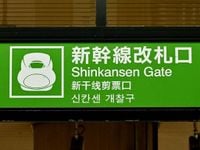On March 26, 2025, operations of the Tohoku Shinkansen faced interruptions due to safety concerns stemming from two issues: an object found attached to the overhead lines at Fukushima Station and severe winds affecting train travel between key cities.
According to JR East, around 9:15 AM, the presence of a vinyl sheet measuring approximately 100 meters long was discovered clinging to the overhead lines on the down line at Fukushima Station. This prompted immediate removal actions, leading to the suspension of train services between Tokyo and Sendai.
Shortly thereafter, at 10:29 AM, further complications arose when wind speed meters between Sendai and Shiroishi-Zaō Stations registered dangerous levels, prompting the suspension of all services between Tokyo and Sendai. According to reports, the initial expectation for resuming operations was around 10:40 AM, but as conditions worsened, the affected segment was extended to cover the line all the way to Morioka.
While crews worked to remove the obstructive vinyl sheet, which had earlier caused some delays, it was confirmed that no injuries were reported related to the incidents. The object raised crucial safety alarms, as such debris can pose significant risks to high-speed trains. Operations were incrementally re-evaluated throughout the morning, focusing on restoring service as wind conditions improved.
By approximately 10:44 AM, it became evident that the strong winds persisted, thus forcing extended operational adjustments. According to updates from JR East, they emphasized that once the winds calmed down sufficiently, services would gradually resume, yet details about specific times remained uncertain at that point.
Passengers affected by the service interruptions expressed frustration, seeking clarity on when to expect resumption and when services would return to normal. JR East reiterated their commitment to passenger safety while simultaneously attempting to minimize inconveniences as much as possible; a complex balancing act during severe weather scenarios.
As travelers anxiously awaited updates, officials assured that the Joetsu and Hokuriku Shinkansen lines continued to operate normally, minimizing disruptions for some commuters. Officials noted that thorough inspections of the overhead equipment were ongoing, seeking to prevent further disturbances caused by flyaway debris.
The incidents on March 26 reflect a broader pattern of challenges faced by Japan's rail systems, particularly during extreme weather events. Flexibility, quick decision-making, and effective communication are key components to manage operations and minimize the impact on passengers.
In a statement, JR East noted the procedures in place to handle such interruptions and the significance of adhering to safety standards, stating, “The safety of our passengers is always our top priority. We will continue to monitor the weather and resolve any obstructions on the lines as swiftly as possible.”
As the day progressed, authorities stayed vigilant, continuing to check line conditions in anticipation of the winds' subsiding and to ensure the safety of both infrastructure and passengers for the resumption of operations. With the weather being unpredictable, JR East is set to keep passengers updated through their communication channels and official notices.
This incident serves as a reminder of the unwavering focus on safety in Japan's Shinkansen network, renowned for its punctuality and effectiveness, while also showcasing the system's ability to react swiftly to unforeseen challenges. Riders on the Tohoku Shinkansen are always encouraged to remain aware of current service conditions, especially amidst environmental factors that could disrupt operations.








